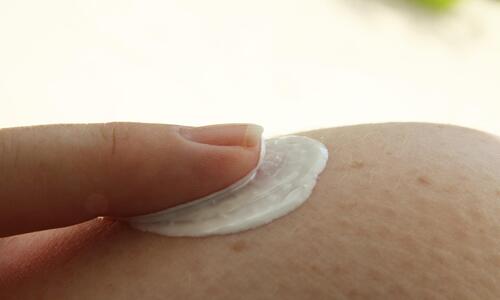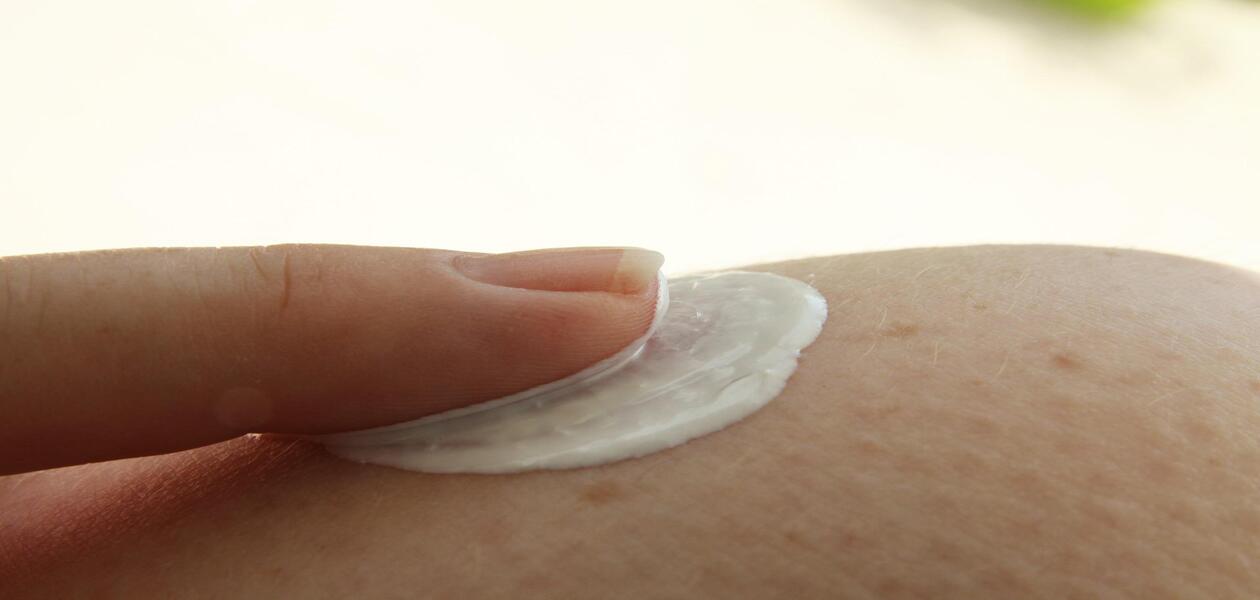The word “emulsifier” is derived from the Latin word emulgere which means milk out. An emulsifier is a surfactant that stabilizes an emulsion by inhibiting the coalescence of droplets of one phase into larger droplets. An emulsifier is a substance that helps to keep two liquids from separating. Emulsifiers are used in many products, including salad dressings, mayonnaise, and whipped cream. Emulsifiers work by reducing the surface tension between two liquids. This allows them to mix more easily and prevents them from separating. This article will help you to know about common emulsifiers in skin care in depth.

Common Emulsifiers in Skin Care Products
Emulsifiers are substances found in various types of skin care products. These chemicals can cause a wide range of reactions in the skin, ranging from redness to itching to heat. Common emulsifiers used in skin care products are sodium lauryl sulfate, benzalkonium chloride, behentrimonium methosulfate, Cetearyl alcohol, glyceryl stearate, and stearic acid.
Emulsifiers are an important part of many skin care products. They help to keep the oil and water in a product from separating, and can also help to improve the texture and feel of a product.
There are many different types of emulsifiers that can be used in skin care products, but some of the most common include:
-Ethylhexylglycerin
-Glyceryl stearate
-Cetearyl alcohol
-Behentrimonium methosulfate
-Stearic acid
-Caprylic/capric triglyceride
Each of these emulsifiers has different properties that can make them more or less suitable for use in a particular product. For example, some emulsifiers can make a product feel thicker or creamier, while others can help to improve the spreadability of a product.
Choosing the right emulsifier (or combination of emulsifiers) for a product can be a bit of a trial and error process, but there are a few general guidelines that can be followed.
In general, skin care products that are designed for dry or sensitive skin types should use emulsifiers that are more gentle and less likely to cause irritation. These include emulsifiers such as glyceryl stearate and cetearyl alcohol.
Products that are designed for oily or acne-prone skin types, on the other hand, can often benefit from emulsifiers that help to control excess oil production. These include emulsifiers such as stearic acid and caprylic/capric triglyceride.
Ultimately, the best way to find the right emulsifier (or combination of emulsifiers) for a particular product is to experiment until you find a formulation that works well for you.
Are emulsifiers bad for the skin?
Emulsifiers have similar properties as detergents and have positive or negative electrical charges. They can disrupt the skin’s natural barrier and bind with keratin. If used too frequently, they can lead to skin irritation and even toxicity. Luckily, there are safer and milder emulsifiers available. Most manufacturers of skin care products use a combination of both. In the meantime, you can choose the right one for your needs.
Oil-in-water emulsifiers
Oil-in-water emulsifiers have two main properties: they stabilize and increase the spreadability of creams and lotions on the skin. They also have the advantage of being relatively cheap since oils are always more expensive than water. They also are economical since they are stable at low temperatures and are easier to work within the skin. And, as you can see, these are not the only emulsifiers in skin care products.
Hydrophobic emulsifiers
Some emulsifiers are hydrophobic or hydrophilic. Hydrophobic emulsifiers include cetyl alcohol and stearic acid, while cationic emulsifiers contain a positive charge. They are less versatile and are generally considered “old-fashioned” than cationic ones. Some people are also sensitive to monoalkyl emulsifiers.
Sodium lauryl sulfate
Another type of emulsifier is sodium lauryl sulfate, which is a water-loving molecule. It prevents oil droplets from forming a layer on top of the water, which is what causes the product to appear as an emulsion. Emulsifiers are a great way to keep different substances from separating. So, if you’re looking for a way to make your cream or lotion a bit more moisturizing, try adding emulsifiers to your product.
How emulsions and emulsifiers work?
An emulsion is a mixture of two or more liquids that are normally unmixable. Emulsions are part of our everyday lives, from sauces and salad dressings to cosmetics and pharmaceuticals. In order to create an emulsion, you need an emulsifier.
An emulsifier is a molecule that has both a hydrophilic (water-loving) head and a lipophilic (oil-loving) tail. When added to an emulsion in skin care, the emulsifier molecules arrange themselves at the interface between the oil and water phases, with their hydrophilic heads in the water and their lipophilic tails in the oil. This enables the two phases to remain stable and prevents them from separating.
The most common emulsifiers are surfactants, which are molecules that lower the surface tension of a liquid in skin care. This makes it easier for the oil and water phases to mix together and form an emulsion.
Functionality of different emulsifiers
Firstly, The type of emulsifier you use will determine the stability of the emulsion. For example, if you want to make a mayonnaise that will not separate, you need to use an emulsifier with a high HLB (hydrophilic-lipophilic balance).
Secondly, If you want to make a salad dressing that will separate over time, you need to use an emulsifier with a low HLB. This will allow the oil and water phases to slowly separate, making the dressing more oily over time.
So, how do you choose the right emulsifier for your needs? The HLB system is a good place to start. This is a scale that runs from 1 to 20, with 1 being the most oil-loving and 20 being the most water-loving.
Lastly, if you want to make a stable emulsion, you need to use an emulsifier with an HLB that is close to the middle of the scale. For example, if you want to make a mayonnaise with an HLB of 8, you would need to use an emulsifier with an HLB of around 4.
The HLB system is a good way to choose an emulsifier, but it is not the only factor to consider. The type of oil you are using and the desired texture of the emulsion will also play a role in choosing the right emulsifier.
So, there you have it! Emulsions are a part of our everyday lives and they are made possible by emulsifiers. The next time you enjoy a creamy salad dressing or a rich and smooth lotion, remember the role that emulsifiers play in making these products possible.
Best emulsifiers used in skincare & cosmetics formulations
Emulsifiers work by adsorbing at the interface between the oil and water phases and forming a barrier that limits the contact between the two phases. This results in a more stable emulsion that is less susceptible to phase separation.
There are a variety of emulsifiers that can be used in skincare and cosmetics formulations. The best emulsifier for a particular formulation will depend on the ingredients that are being used and the desired properties of the final product.
Emulsifiers used in skincare and cosmetics formulations
Some of the most common emulsifiers used in skincare and cosmetics formulations include:
Polysorbates: Polysorbates are a group of emulsifiers that are derived from sorbitan esters. They are commonly used in skincare and cosmetics formulations because they are relatively inexpensive and they are effective at stabilizing emulsions. Polysorbates are often used in formulations that contain water-insoluble ingredients, such as essential oils.
Cetearyl alcohol: Cetearyl alcohol is a fatty alcohol that is derived from coconut oil. People commonly use it as an emulsifier in skincare and cosmetics formulations because it is effective at stabilizing oil-in-water emulsions. You may also use it as a thickening agent and emollient.
Glyceryl stearate: Glyceryl stearate is a fatty acid that is derived from glycerin. It is commonly used as an emulsifier in skincare and cosmetics formulations because it is effective at stabilizing both oil-in-water and water-in-oil emulsions. Glyceryl stearate is also used as a thickening agent and emollient.
Stearic acid: Stearic acid is a fatty acid that is derived from animal fats and oils. It is commonly used as an emulsifier in skincare and cosmetics formulations because it is effective at stabilizing oil-in-water emulsions. Stearic acid is also used as a thickening agent and emollient.
Emulsifiers are an important ingredient in many skincare and cosmetics formulations. The best emulsifier for a particular formulation will depend on the ingredients that are being used and the desired properties of the final product.
Why Say No To Emulsifiers in Skin care?
We all know that emulsifiers are used in skin care products to help mix oil and water together, but did you know that they can actually be harmful to your skin? Here are three reasons why you should avoid using products with emulsifiers:
Emulsifiers can disrupt your skin’s natural barrier.
Your skin is covered in a natural barrier that helps to keep it hydrated and protected from environmental damage. However, emulsifiers can break down this barrier, leaving your skin vulnerable to dryness, irritation, and infection.
Emulsifiers can cause inflammation.
Many emulsifiers are derived from petroleum or other harsh chemicals. When these chemicals come into contact with your skin, they can cause inflammation, redness, and other irritation.
Emulsifiers can clog your pores.
Emulsifiers can also clog your pores, which can lead to breakouts, blackheads, and other skin problems.
So, next time you’re shopping for skin care products, be sure to check the label for emulsifiers. Your skin will thank you!
Final Thoughts
Skin care professionals have used emulsifiers in skin care for years. Hopefully, you will find this information helpful. By using an emulsifier, you can avoid unwanted reactions to your skin care products. So, what is an emulsifier and what does it do? It stabilizes an emulsion by dispersing water and oil in a uniform manner.
FAQ
Q. Which emulsifier is best for face cream?
A. Water-based emulsifiers such as polysorbate 20 and cetearyl alcohol are commonly used in face creams.
Q. Is aloe vera gel an emulsifier?
A. Aloe vera gel is a natural emulsifier that can be used to create lotions, creams, and other beauty products. It is also a popular ingredient in many commercial products.
Q. What is a common emulsifying agent?
A. Common emulsifying agents include soap, detergent, and egg yolks. Emulsifying agents work by creating an invisible barrier between the two liquids, which prevents them from coming into contact with each other and separating.


1 thought on “Common Emulsifiers In Skin Care”
Comments are closed.